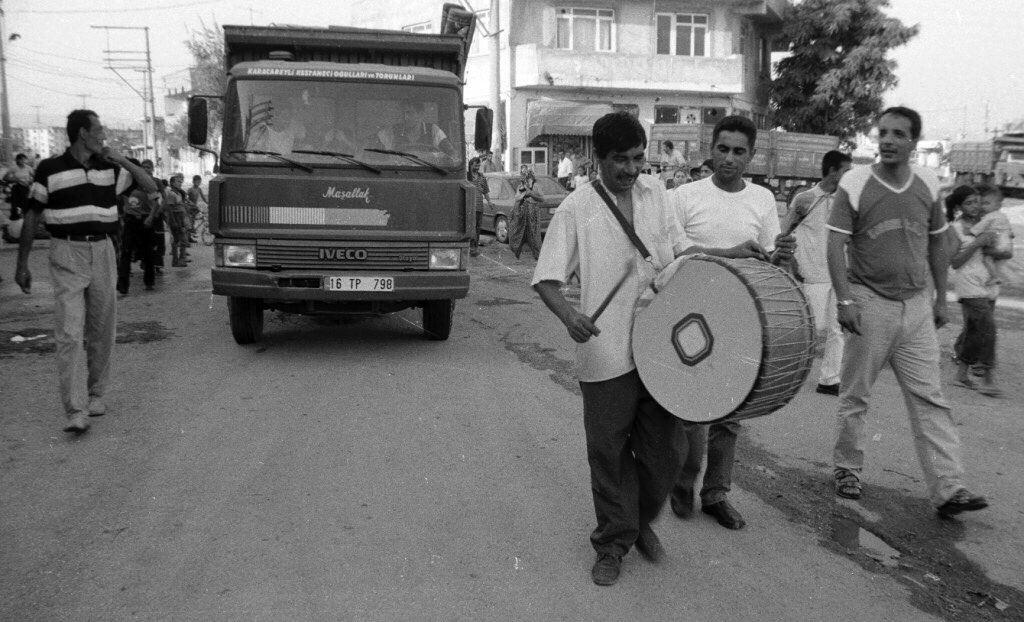24 September 2019 (19:00 to 20:30)
2019 – 2020 Lecture Series
The Romani and Traveller peoples of Turkey (Romanlar, Domlar, Lomlar, Gezginler, Abdallar and others), have been present in Anatolia and Thrace (Anadolu ve Trackya) since the Byzantine period, arriving at a similar time to the first Saldjûk (Selçuk) Turks began to settle in eastern regions, c.1050. Originally from India, their ancestors had migrated as a result of the collapse of the western Turkic–Afghan Ghaznavid Empire, where they had been ghulâm (soldier-servitors), military auxiliaries, blacksmiths, grooms and farriers, carpenters, entertainers, musicians, dancers, fortune–tellers and practitioners of divination. Their arrival in Byzantium was first noted in a chronicle from the reign of Basileus Constantine IX Monomachus (1042 CE to 1055 CE), a time of troubles and uncertainty; records throughout the Byzantine period indicate their continuing presence as fortune–tellers, diviners, bear–leaders, acrobats, story–tellers, shoe-makers, soldiers, and tent–dwellers, but not as dancers or musicians.
During the Ottoman Empire, Romani dancers and musicians gained high recognition at points, and adapted to the classical Ottoman system of social and ethnic organisation to become a tax–paying community (the ‘Çingene’ sancak), regularly gathering to register at the annual Hdrılez (Erdelezi, as it is called in Rromani-chib or the Romani language) festival and celebration. By the early nineteenth–century however, increasing influence of European notions about ‘race’, ethnicity and inheritance had penetrated the Ottoman lands and ‘Gypsies’ had become associated with many of the stereotypes of ‘enlightened’ scholarship in Germany, England, Spain, Sweden, Hungary, Poland, Slovakia, Russia, France and elsewhere. By the late nineteenth–century, these influences had permeated Ottoman society and Romani dancing, musicianship, singing and entertainments were viewed as ‘suspect’ by the administration and person of Sultan Abdulhamid II (1876–1909), even going so far as to ban a Romani dance and music group from travelling to and performing at the World’s Columbian Exposition (1893) as ‘unsuitable’ to the image of the Empire and the Caliphate.
This lecture will examine the origins of Romani dance and performance in the Ottoman Empire and Turkish Republic, the relationship with Romani identity in Turkey, and with Romani dance and performance across Europe and the Americas. A short performance by Rayhan Tuzsuz, one of the foremost Romani dancers and dance–teachers in the world, and her husband, the musician Hasan Tuzsuz, will follow the lecture at the Swedish Research Institute.
Dr Adrian Marsh, Researcher in Romani Studies & Romani Early Years, is of Romany-Traveller origins, and works with Roma, Gypsy, and Traveller communities in the UK, Sweden, and Central, Eastern and South-Eastern Europe. He gained his PhD in Romani Studies at the University of Greenwich, London and his MA in History at the School of Oriental and African Studies. Dr Marsh was awarded a first class honours BA degree in East European History at the School of Slavonic & East European Studies UCL and won the Andrew Ferguson Memorial Prize for a final dissertation on women and power in the Ottoman Empire. Dr Marsh has taught Romani Studies at universities in London, Malmö, Lund, Stockholm, Cairo, Istanbul and Budapest and has held an ESRC fellowship as Researcher in Romani Studies at Greenwich University, London.
He has managed the Roma portfolio of education projects for Råadda Barnen (Save the Children) in Stockholm, Kosovo and Albania (2009 to 2010), the ‘Kopaçi’ programme of Early Education Development projects for Roma, Gypsies, and Travellers for the Open Society Foundations, London (2011 to 2013) and recently coordinated the Roma Civil Rights Movement section of the Roma Digital Archive, 2017 – 2019 (romarchive.eu). He is currently living in Istanbul, working as a consultant expert with charities and organisations such as the Romani Cultural and Arts Company (romaniarts.co.uk), the Council of Europe, the Central European University (Budapest) and other international organisations.
Image © Mustafa Özünal, used by kind permission

